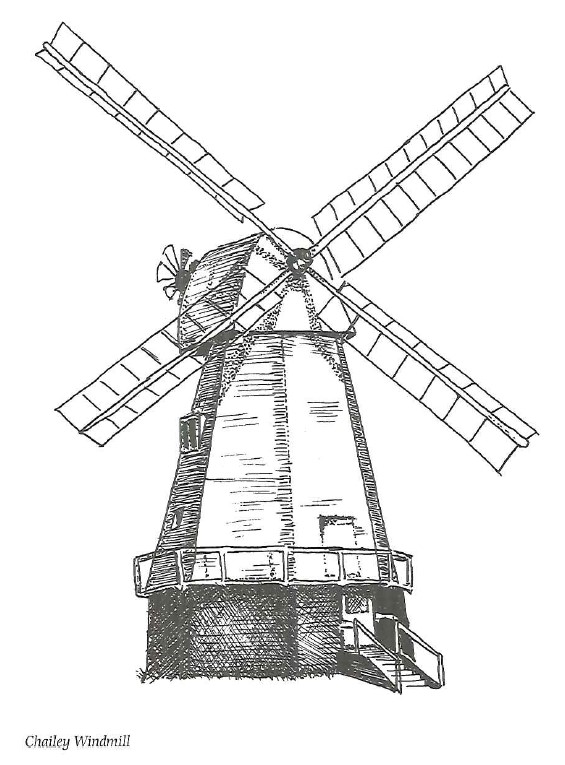A small place but a lively one. The Laughing Fish is famous for folk singing throughout the year and every Easter Monday was the scene of the traditional Tommy Trot Beer Race. The competitors had to carry a half-pint of beer a distance of one mile to the village mill and back within a set time limit, the one spilling the least being adjudged the winner. It was no easy task as the melee surged down the lane and many succumbed to temptation after losing a few drops and downed the lot.
At The Halfway House there was a noisier contest every year when it staged the Lawnmower Grand Prix. The hopefuls roared round a field behind the pub, with different classes for different types of machine with the cutter blades temporarily put out of action in the interests of toe preservation.
Isfield Station was a victim of Dr Beeching’s axe and for many years stood empty and derelict, an eyesore in the heart of the village. Mr Dave Milham stopped the rot in 1983 when he fulfilled a long-standing personal ambition by buying the land from British Rail. He launched himself into far more than just renovation to make a home. He created The Lavender Line, a junior version of the county’s more famous Bluebell Line a few miles up the road (see Sheffield Park). The station buildings took on a new lease of life, complete with a proliferation of oldfashioned metal advertisement plates, the track was relaid and steam engines returned once more to Isfield. The station’s ghost is still there despite all the changes. It is said to be of a young bride who kissed her husband goodbye for the last time on the platform when he left to fight in the First World War. She committed suicide when news arrived that he had been killed in action.
Isfield’s mill is one of the few remaining independent concerns in the county. Water power has long since given way to the more reliable electricity, but the memory of the old days lives on in Clappers Cottage opposite the mill. Clappers was the nickname given to the sluice gates. Perhaps the workmen had to go like the clappers to get them open!
Nearby is a small walled enclosure with a single narrow entrance, believed to be the old pound where stray farm animals were kept and returned to their owners on payment of a fee. The local lads once played a trick on an old carter who had gone indoors to enjoy the hospitality of the mill. In double quick time they dismantled the cart, carried each piece through the pen doorway and then reassembled it on the inside. What the carter said when he returned and found his cart inside the pen and how he got it out again has not been recorded.
In these days of state benefits it is sobering to think that well within living memory the village was the home of Molly (or Moggy) Mothballs. ‘Home’ for the eccentric Molly was a cave in the rocks at Buckham Hill, and if the locals had christened her with a less than kind name they were always generous enough to the old lady as she trundled along the lanes pushing an old pram. Molly was knocked down and killed in an accident involving a military vehicle – and a small fortune in notes was found sewn inside the linings of her various coats.
She was given clothes in plenty, but never seemed to get the hang of changing them; one layer went on over another and she resembled a small round ball as she made her perambulations.
The old parish church stands in splendid isolation beside the remains of an even earlier structure, the outline of a Motte and Bailey clearly visible where the old fortification once commanded these upper reaches of the river Ouse. At one time St Margaret’s housed the richly sculpted marble coffin lid of William the Conqueror’s daughter Gundrada, wife of William de Warenne, founder of Lewes Priory. It was brought to Isfield from the priory at the Dissolution, discovered beneath the floor of the Shurley chapel in 1775 and then returned to the county town.
Across the meadows from the church rises the magnificent Tudor mass of Isfield Place, once the home of the Shurleys, An underground passage is said to link the two buildings and if so it may well have played a part in the local smuggling business which took full advantage of the fact that the river was navigable.
